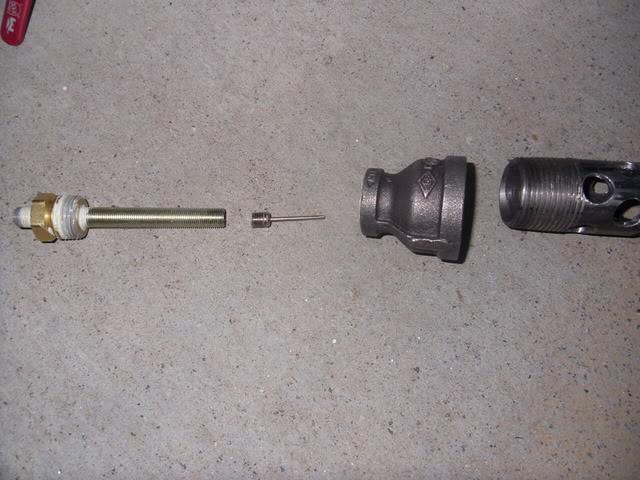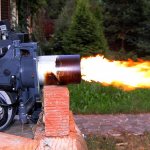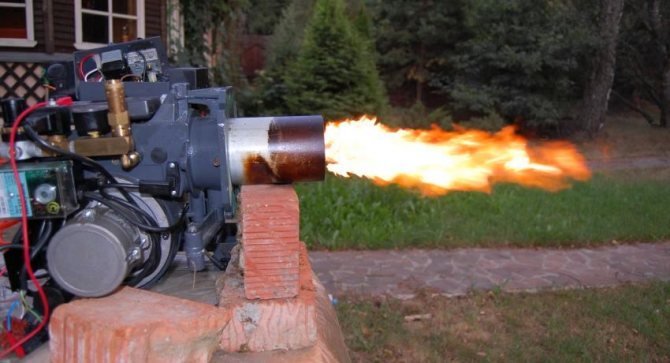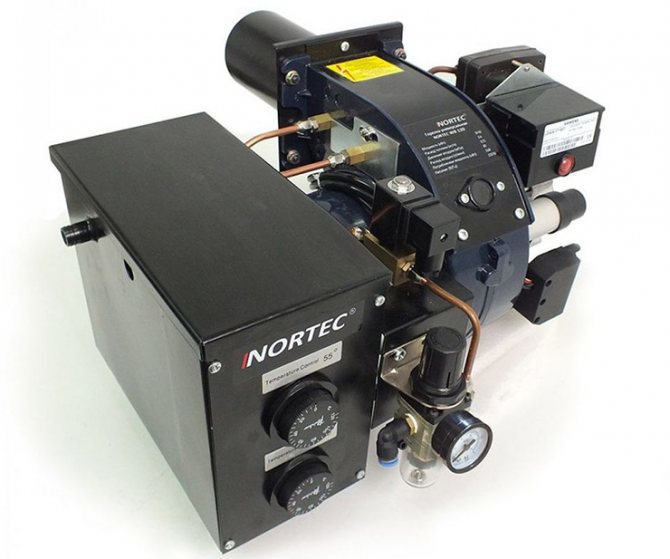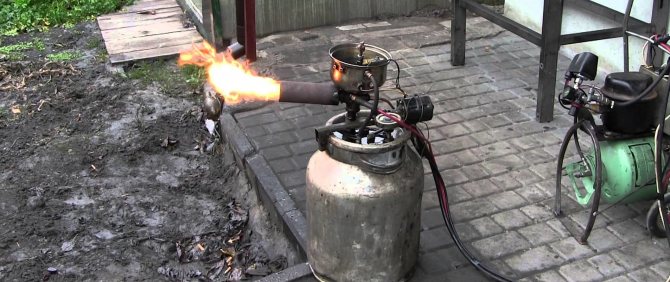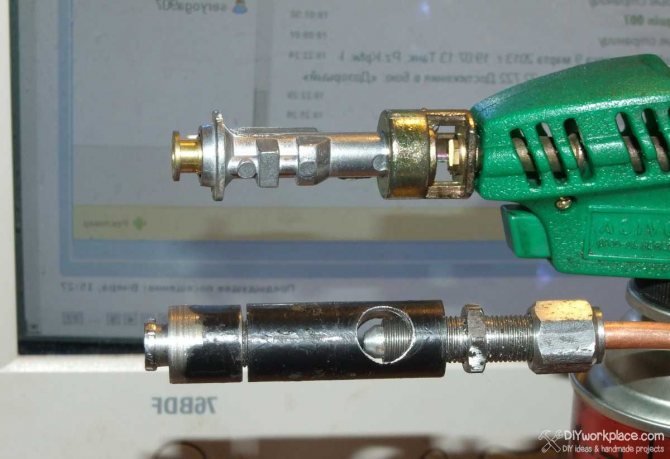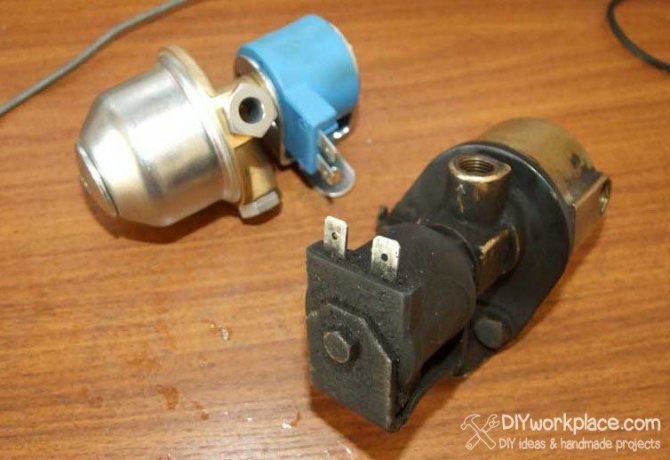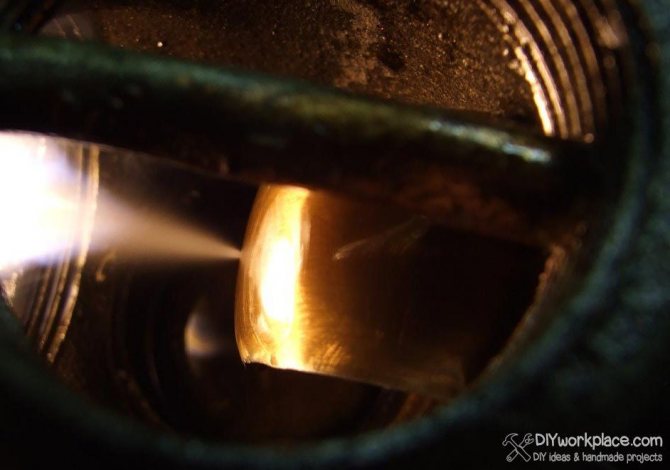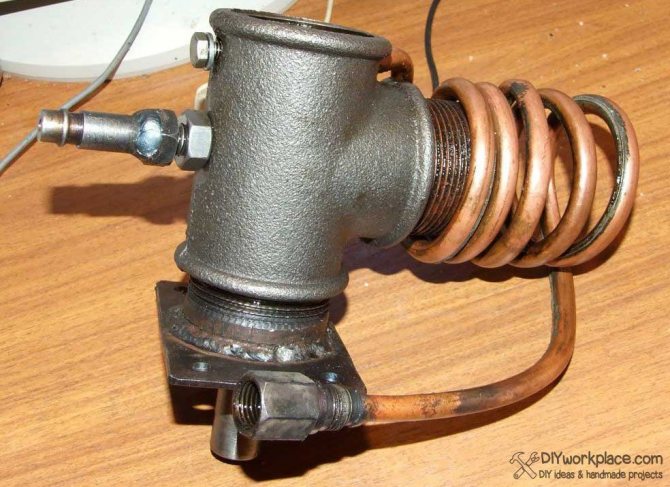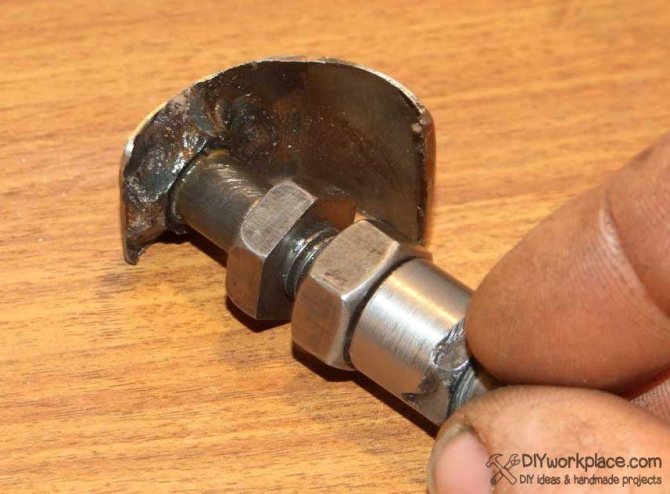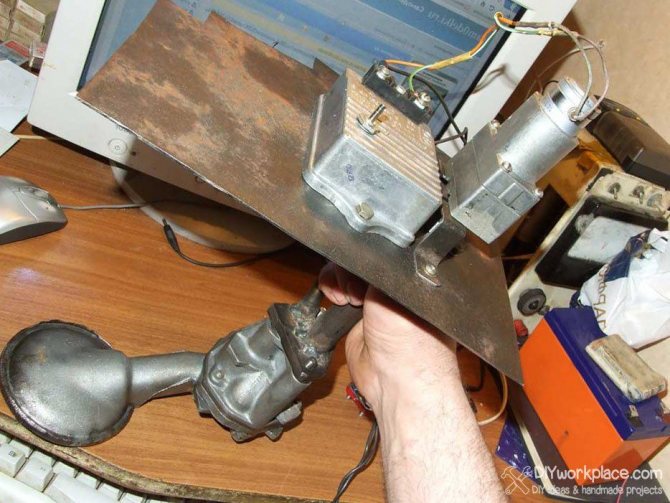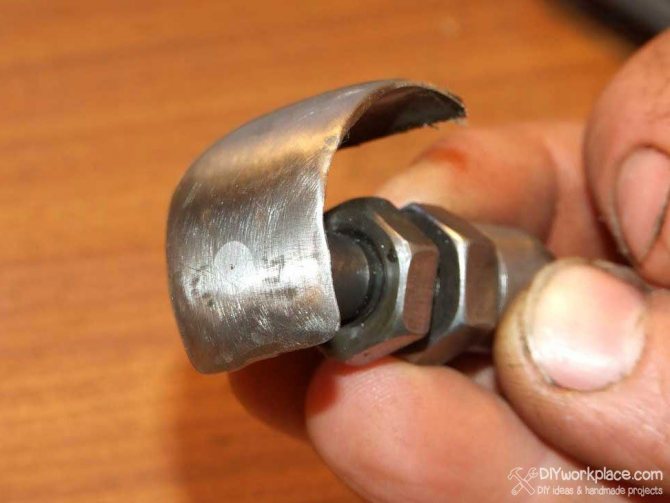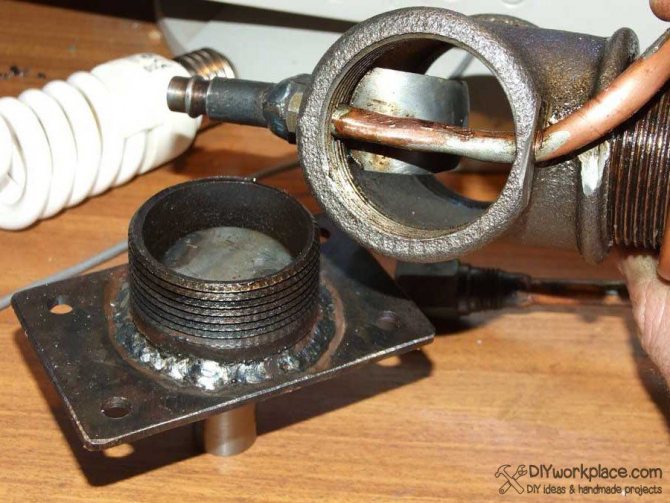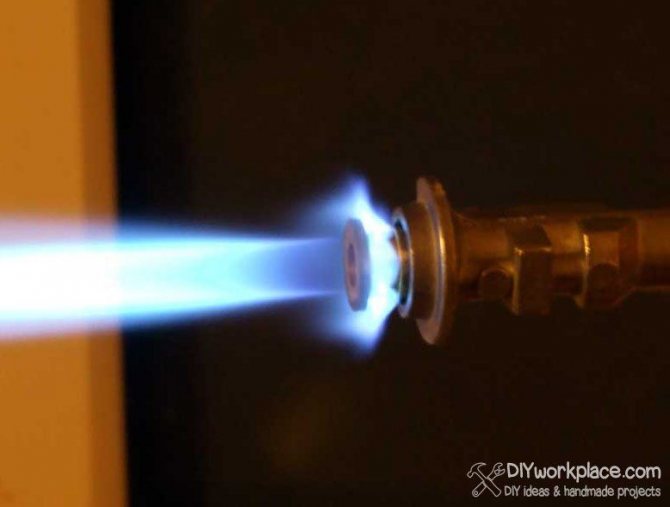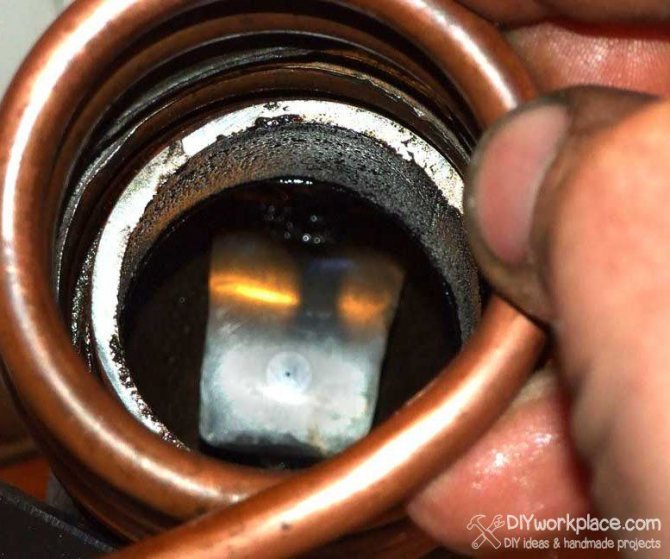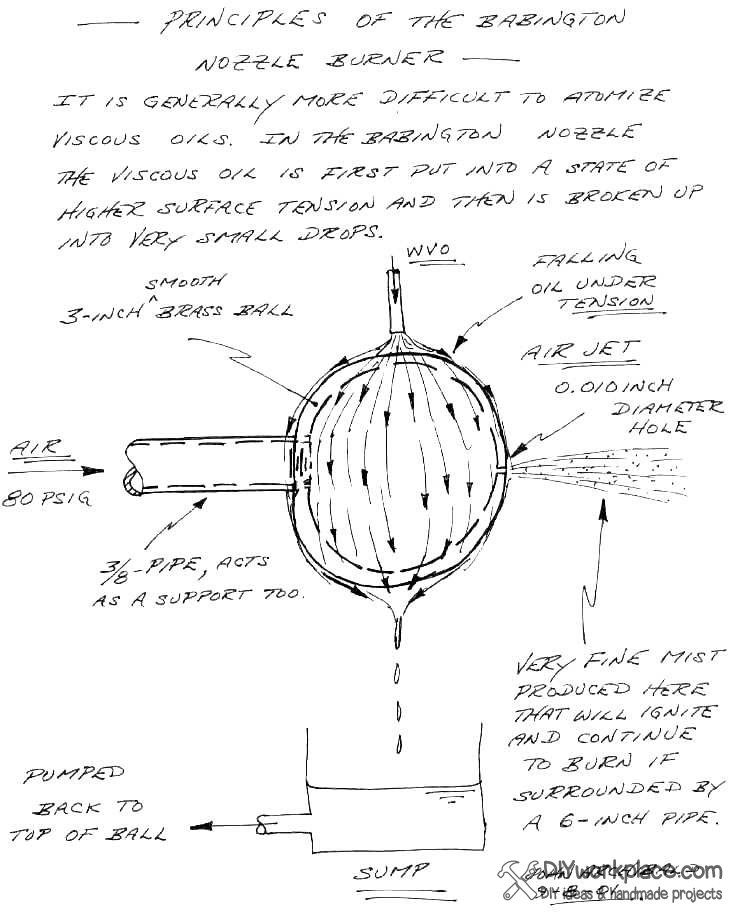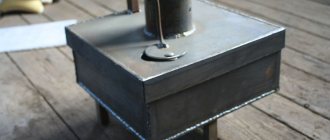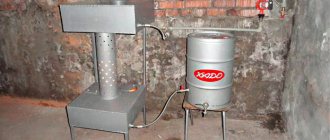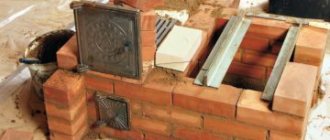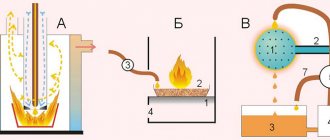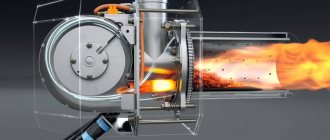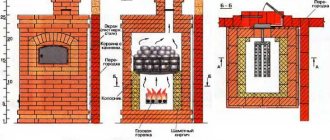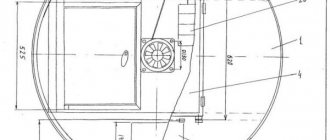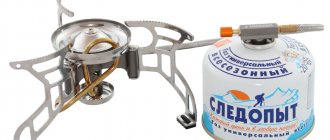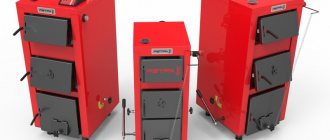Many craftsmen in their practice are faced with the need for new devices, such as a waste oil burner. For workshop and garage owners, this will replace a stove for heating the room, especially if there are decent reserves of used oil and other fuels. Burners, if you understand the principle of their operation, can be adapted for mixed fuel.
Waste oil burner can be used to heat technical rooms
Varieties of Russian-made waste oil burners
In the cold season, not only residential, but also auxiliary premises need heating. At the moment, devices for heating are used on different types of fuel, including waste or used technical oil. On the Russian market, you can find devices that process different fuel bases, as well as having a narrow specialization. By the type of fuel burned, such devices are:
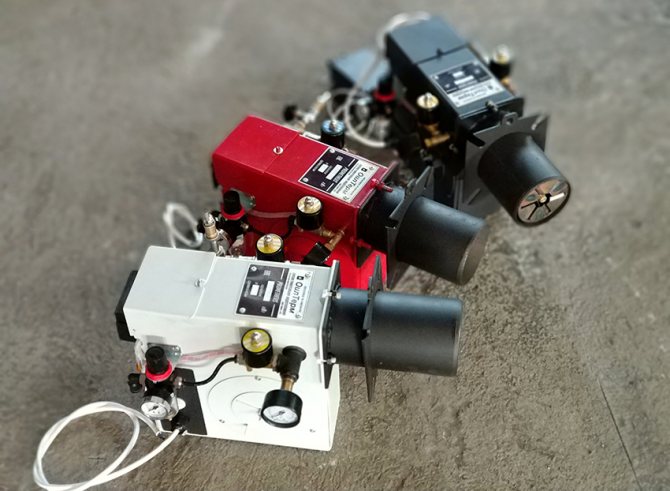
In terms of functionality, the torches for testing are not only heating, but also welding and lighting
- gas;
- on liquid fuel;
- combined.
The simplest and most economical device for heating a room is considered to be a working burner. In terms of functionality, burners are divided into 3 subspecies:
- welding;
- lighting;
- heating.
The principle of operation of these devices was borrowed from primitive kerosene gas back in the 50s. Quite quickly, the simplest burners became popular, they began to be purchased for heating country houses and garages. In those days, any fuel was inexpensive, but over time, zealous owners, inventors and innovators began to look for a replacement for gasoline, diesel fuel and kerosene. Fuel oil and waste oil were used, which is now used as a full-fledged fuel. Today, the device is still relevant, moreover, it is an excellent way to preserve the environment.
Important! In the room where any liquid-fueled apparatus will be used, be it a home-made gasoline burner, an apparatus for testing or a diesel fuel burner with your own hands, there must be a fire extinguisher!
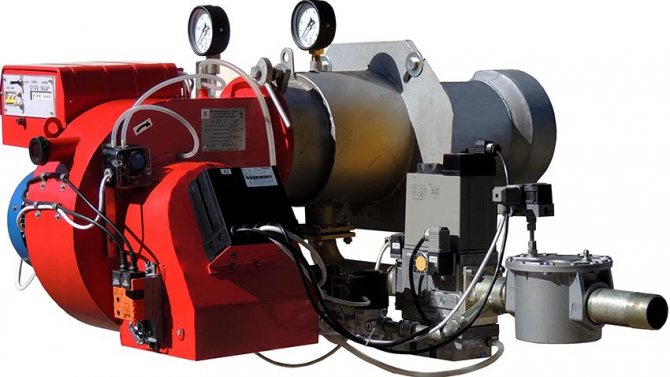

Burners for development are of the type are liquid fuel, gas and combined
General information
The Babington mining burner appeared a very long time ago and it is quite easy to guess who its creator was. Currently, the scope of such mini-heating equipment is reduced to heating small rooms. Interestingly, the burner can be assembled from scrap materials and does not require any investment. In addition, the organization of a chimney is not required, since no smoke is formed during the combustion process. Nevertheless, it is still necessary to take care of good ventilation in the room. By the way, the patent for the Babington burner was removed relatively recently, so in recent years, the drawings of the unit have become available to everyone. But before moving on to the assembly process, I would like to understand in detail how the device works. First, a little history.
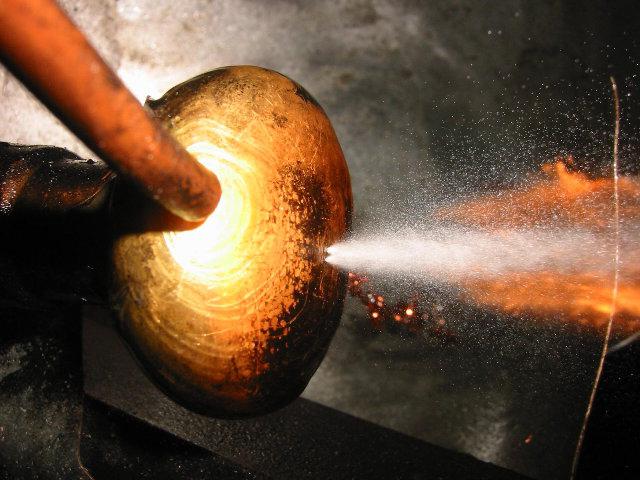

Construction of a finished waste oil burner
When buying gas burners and similar equipment, people are often interested in this or that element and its purpose in the overall design. For example, they want to know where the oil should flow from and where, how it ignites, and so on. When they think about how to make a burner at home, looking for a sample for building a homemade analogue, even more questions arise.Most often they are interested in replacing nozzles and oil containers with something suitable from the available tools.
Having at his disposal photos, diagrams and drawings of a waste oil burner, not every master will immediately get down to business. The main reason is the large number of specific details.
Note! It doesn't matter what the device was built from - the principle of operation of all burners is approximately the same: filtered and heated oil is supplied from the main tank and burned in the combustion chamber.
The multicomponent process consists of several stages, and the success of its operation will depend on the quality of the constituent parts of a drip burner on waste oil with your own hands:
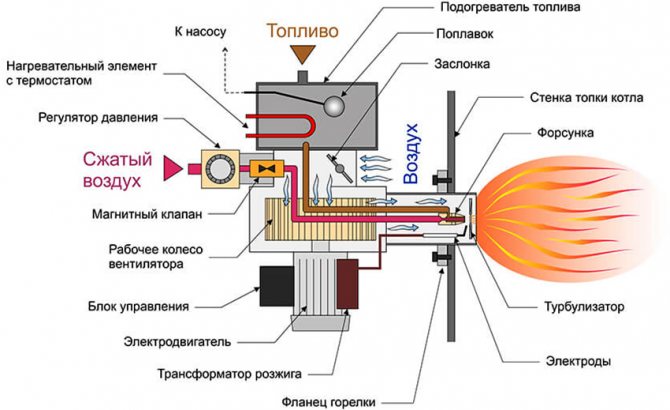

Waste oil burner operating principle
- collection and filtration of mining;
- pumping and heating of purified oil;
- combustion process to obtain heat.
Filtration as the beginning of the burner operation during the development
Enterprises that produce ready-made devices operating on liquid fuel or mining are equipped with additional options that purify the oil. These are the so-called intake floats, which take the purest portion of the substance from the surface for heating. This principle of sampling mining is currently inherent in the overwhelming majority of manufactured products belonging to this category.
Further, through a hose made of material that is resistant to an aggressive environment, the waste oil is fed in portions. The tube is usually submerged approximately to the middle of the main container, so the solid suspension remains at the bottom, and a cleaner layer is used for heating and processing. At this stage, it is possible, without additional efforts, to filter the fuel of a fairly high quality. Dirty impurities, sand and other insoluble components remain at the bottom.
Important! The duration of the operation of the burner for the waste oil burner with your own hands largely depends on the purity of the fuel. Therefore, it is worth taking care of at least a rough cleaning of the oil fraction supplied to the furnace.
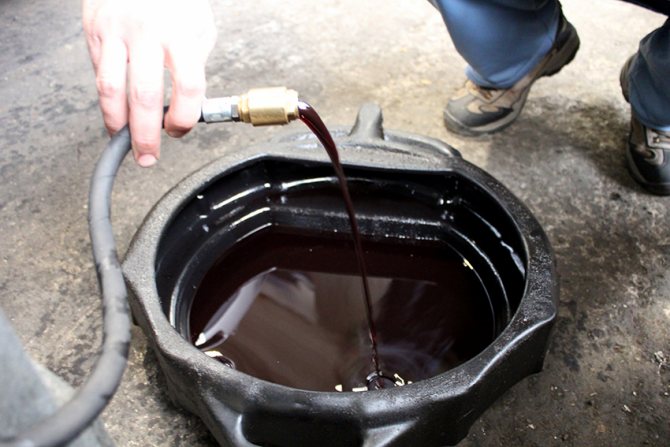

In order for the burner to work for a long time, it is necessary to take care of the cleaning of the fuel.
As you know, filters are single and reusable. Sifting of coarse particles can be done through several layers or filter elements, as in the ready-made heating pads of the Smart Burner company. The traditional configuration of different products is about the same: ready-made devices are rarely produced without a filter or elements replacing it.
The small transfer pump is a standard component for the smooth flow of oil. If you organize the supply for a stationary unit according to the principle of communicating vessels, then in a home-made burner it can flow to the nozzle by gravity.
Warming up used oil before burning it
An equally important stage in preparing the device for operation is the heating of the waste oil before complete combustion to generate heat. When heated, the oil becomes more liquid and plastic, as a result of which the optimal consistency is excellently burned.
A preheating tank or heating coil is needed for any do-it-yourself waste oil burner - the drawings show an intermediate location. Usually it is a separate chamber or a small volume capsule hidden in the middle of the body. Purpose - to warm up the fuel as efficiently as possible before the combustion process. Finished products most often have a temperature switch that monitors the heating level. As a rule, they operate in the operating range of 0-150 ° C.
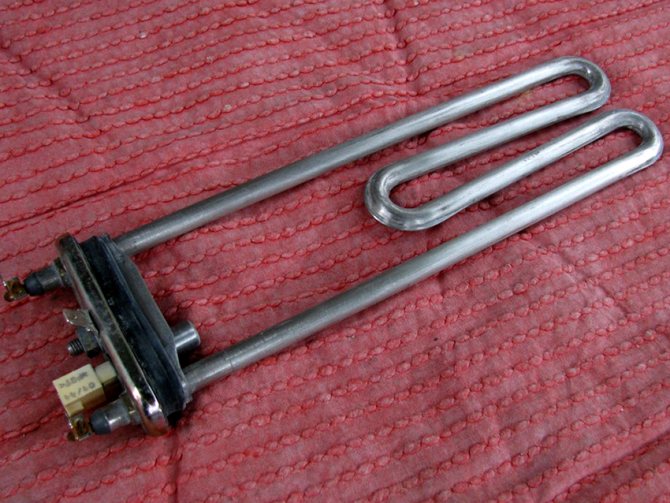

Some burner models are equipped with an electric heating element for heating oil
Attention! Burners adapted for combined slurries usually have a heating vessel. Diesel fuel does not need to be heated in self-made diesel burners.
Manufacturers decide differently how to organize this stage. The Gnome burner on waste oil (and other similar models) has a small electric heating element inside the tank, which is responsible for heating the mining to the desired level. In the same way, as in this case, each manufacturer decides in his own way and the issue of oil supply. Often, float switches and pumps are responsible for the flow rate. The system switches itself off when the preheating tank is full.
Compressed air supply for waste oil disposal
Compressed air is required to prepare the oil mixture for combustion by spraying it. This transport is directed to the nozzle, which is carried out under pressure. Due to the supply through a separate channel, oxygen provides the combustion process in any device, including a Babington burner on waste oil with your own hands. Although the device was originally patented as running on diesel fuel, it was also adapted for industrial oil.
Successful air delivery requires a mini-compressor built into ready-made oil fired fixtures. It can be transported in other ways, for example, according to the pneumatic principle. In the absence of compressed air, the nozzle may not work correctly.
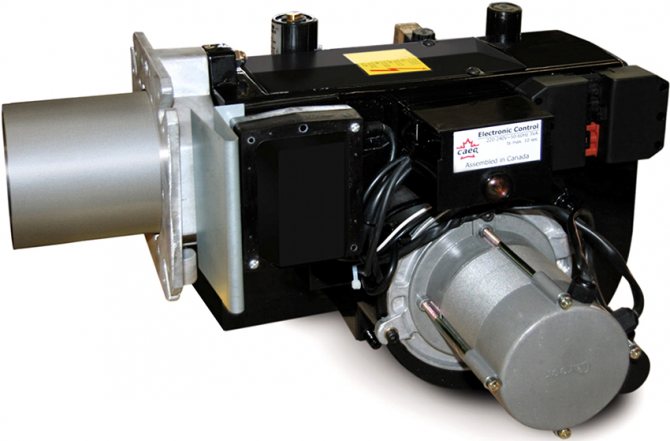

Compressed air in the burner is required to prepare the oil for combustion
Helpful advice! The working pressure is monitored by a small pressure gauge, thus maintaining the parameters necessary for the full operation of the entire apparatus.
Air flow regulation is provided by a special solenoid valve on the body. The expensive equipment also includes air filters for air purification. They will be useful in dusty mini-workshops, boiler rooms or other rooms where the air taken for the combustion process has a lot of impurities. To operate the waste oil burner nozzle with your own hands, you need an adjustable secondary air supply. The following burner parts are responsible for the synchronous operation of all units:
- nozzle (nozzle);
- fuel compartment;
- heating tank;
- air supply valve;
- oil supply regulator;
- pressure gauge (it may not be there);
- blower (fan).
In ready-made apparatuses, ignition is provided by electrodes. The compressed air is supplied through the air duct, from there it enters the nozzle. Waste oil also goes there after heating. If the nozzle is clean, it produces a high-quality ignition of fuel, suggesting the appearance of an even continuous flame.
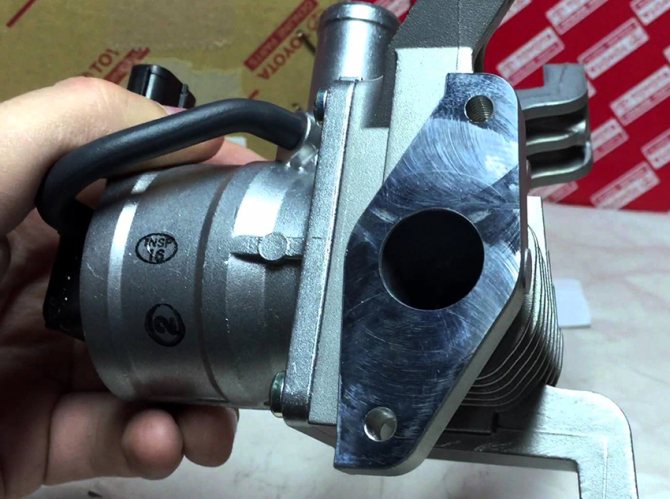

Each mining burner must be equipped with an air supply valve
How oil is fed to the burner
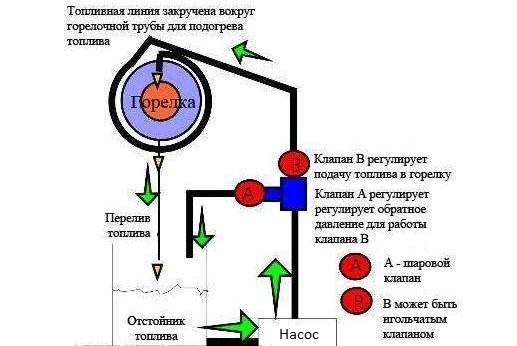

Oil supply to Babington burner. (Click to enlarge)
A homemade oil nozzle is made using a lathe. A stem with a smooth shank is required for the base.
It is required to secure the hose to the oil supply. When a flexible oil supply is provided, we cut a thread in this place.
More than half of the length of the rod will be taken up by a metric thread. The pipe has a diameter of 16 mm. A hole is drilled along the entire length of the nozzle, which will be in contact with the cross piece, which is installed from below and has a diameter of 3 mm. This part is ordered from business professionals, or if you have the skill of working with a lathe, it is done by hand.
The principle of operation of the nozzle is that the viscous working out flows from the hole, which was made in the transverse part, and is captured by the air pressurization. The fuel splits into small droplets, due to which their ignition is much easier.
What is Babington's famous invention
Each invention has its own author, even if his name is undeservedly forgotten by descendants. For example, the British inventor Robert Babington in 1969.received a patent for a diesel-fueled stove, which resembled a kerosene-fueled lighting kerosene gas. The design of Robert Babington was originally designed for kerosene, then it was adapted for diesel fuel. When the number of cars increased disproportionately, the used oil had to be disposed of somehow. Therefore, innovators were looking for devices suitable for these purposes.
First, on the basis of R. Babington's patented invention, a do-it-yourself diesel burner appeared, then it was adapted for burning oil and other types of fuel. The device, functioning in development, appeared much later than the diesel design, but in terms of popularity and safety it surpassed its predecessor.
After a while, a similar device was proposed again, since the first patent had expired, and the liquid fuel furnace did not lose its relevance. Similar devices were repeated in different versions, while not only self-taught craftsmen, but also design bureaus of reputable enterprises tried to assemble the Babington burner with their own hands.
The burner, according to its constructive solution, belongs to simple devices, therefore, it is successfully manufactured at home. It is distinguished by a fairly high efficiency in terms of generating heat required for heating:
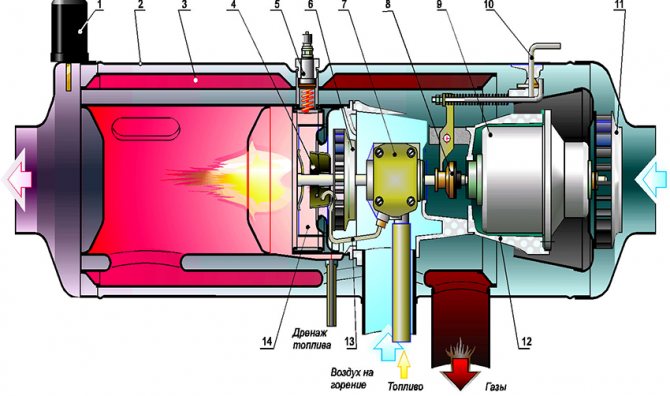

Burner diagram according to the Babington principle, where 1 is a heating sensor; 2 - casing; 3 - heat exchanger; 4 - fuel atomizer; 5 - glow plug; 6 - supercharger; 7 - fuel pump; 8 - friction clutch; 9 - electric motor; 10 - lever for switching operating modes; 11 - fan; 12 - skeleton; 13 - fuel pipe; 14 - combustion chamber
- technological installations;
- small workshops;
- workshops;
- garages;
- warehouse and utility rooms.
Helpful advice! You should not adapt a home-made burner with your own hands for heating your home, since burnt oil has a specific smell.
Do-it-yourself burner: working principle
If you look at photos, drawings and drawings, it becomes obvious that secondary oil forms a thin film on a curved surface. Gas or air is fed into the container through the groove under low pressure. After heating, the oil is sprayed with this air stream, ensuring high-quality ignition.
It was this method of ignition that became the basis for inventions that became widespread in home-made apparatuses and drip burners on waste oil, produced at the factory. Waste oil is, in fact, free fuel, a spent suspension. Therefore, it is considered more advantageous against the background of other heat sources:
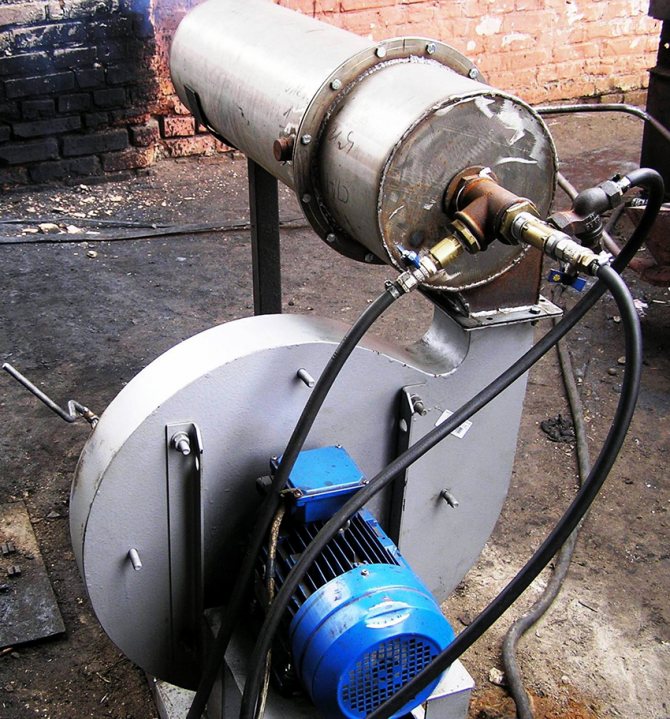

A waste oil burner can be made by hand
- solid fuel and briquettes for a homemade pellet burner;
- gasoline and diesel fuel;
- electricity;
- natural gas;
- kerosene;
- fuel oil.
Helpful advice! Although mining remains the cheapest basis for generating heat during utilization through incineration, it is still recommended to prepare oil contaminated with impurities - to ensure water settling and filtering out of heavy suspension.
The first devices on kerosene, diesel fuel and oil smoked heavily and gave off an unpleasant odor. Later they offered a do-it-yourself gasoline burner and devices on other combustible raw materials, but an active search for budget fuel was carried out. The oil proved to be a suitable source of heat, but the smoke and smell negated all the advantages. Therefore, all the efforts of the inventors were spent on eliminating the indicated disadvantages of the burner for waste oil boilers. This should have been facilitated by the full combustion, heating and filtration of contaminated fuel.
How to build your own apparatus on the principle of a Babington burner: drawings
The principle of operation of a home-made burner, made on the basis of the idea of Robert Babington, is clear from the drawings, where the components of the unit are visible:
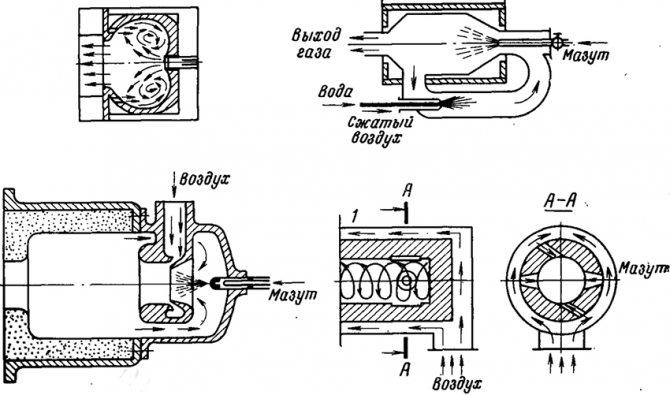

Waste oil burner drawing according to Babington
- used oil tank;
- pallet for working off;
- fuel supply pipe;
- small fuel pump for supplying portions of oil;
- spraying hemisphere with a small hole;
- a heating chamber with a heating element (may not be available).
Note! The nozzle on working off for the organization of the process of even combustion is not an obligatory element. It will be successfully replaced by a nozzle - a small hole for supplying an air jet and fuel. So that it does not clog up, you need to monitor its serviceability.
The used oil evaporates and flows down the hemisphere. These oily vapors mix with the air mass to form a fuel mixture. The remaining oil, which did not have time to be disposed of, flows into the sump, and from there - through a pipe back to the fuel tank.
This unit, based on the Babington patent for burning liquid fuels, is quite simple. Therefore, it is available for reproduction from scrap parts in a home workshop. Success depends on the exact correspondence of the details to their purpose and on the well-coordinated work of all units. Therefore, before making a burner with your own hands, you should carefully calculate all the parameters.
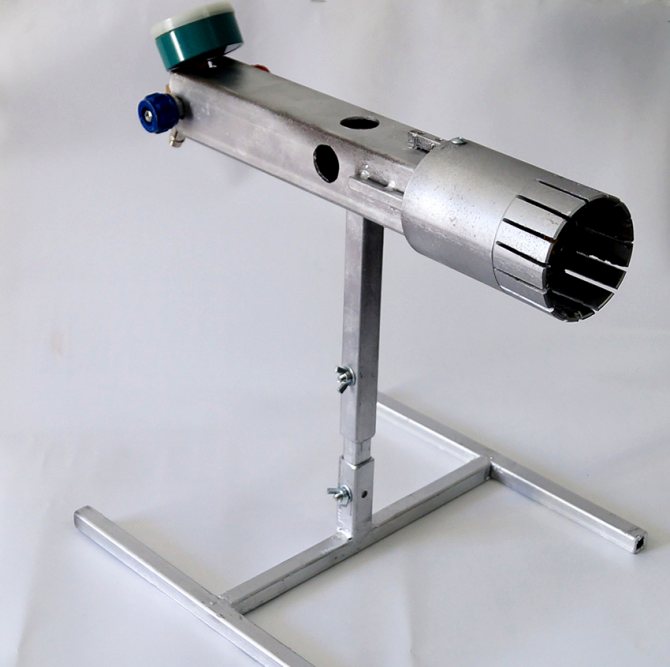

The design of the burner is rather simple, so it can be made from improvised means
Helpful advice! If we take as a basis any one option, for example, the Gnome burner, using ready-made drawings and recommendations of the masters, it is difficult to make a mistake in the size and functionality of the parts.
Burner operation principle
Exhaust, in our case, this is fuel, flows along a curved tube. As a result, due to the effect of surface tension, a thin film is formed, which is pierced by air from tiny holes, usually no more than 0.010 mm in diameter. As a result, the fuel is atomized and enriched with oxygen. For this reason, no additional systems are required to organize the air supply, since the process is completely complete. This design is best suited for working with mining. This is due to the fact that regardless of the quality of the fuel composition and the presence of foreign elements in it, the burner will function. Of course, the heating efficiency in this case will change somewhat. However, the Babington burner must be equipped with a sump with oil, which will be supplied to the working element of the device by means of a gear pump. Although this is a drawback, it cannot be called a significant drawback.
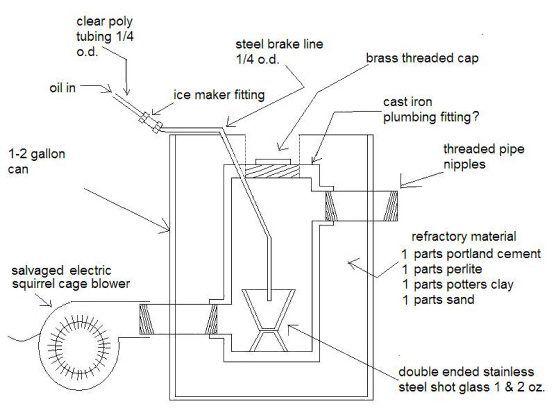

Advantages and disadvantages of a burner with your own hands
Each technical device has a number of useful qualities and shortcomings. Obviously, this device has more pros than cons. The main advantage is the utilization of waste materials with the greatest benefit. Other advantages of equipment for the disposal of oils and liquid fuels:
- burning mining contributes to the preservation of the environment;
- ease of use and high energy efficiency;
- the manufacture of the device is available in ordinary household conditions;
- obtaining heat at a minimum cost of raw materials;
- a simple scheme for the manufacture of a structure, understandable drawings;
- a homemade device can be made from improvised means;
- application in workshops and at enterprises where a lot of processed raw materials are accumulated that require disposal;
- the small dimensions of the burner allow it to be moved if necessary;
- mining and the lowest-grade oil go to the furnace;
- device functionality;
- relative fire safety;
- reuse of used oil.
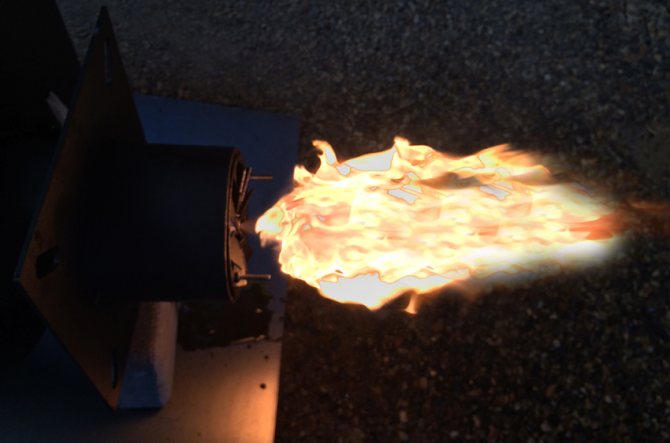

The main plus of the burner is the utilization of used oil with benefit.
Disadvantages:
- not recommended for summer cottages and living quarters due to burning and smell;
- the need to equip the premises with a fire extinguisher;
- be sure to follow all the recommendations for the manufacture of the burner;
- the nozzle or nozzle should be periodically checked (whether the holes are clogged with solid particles);
- sensitivity of the nozzle or nozzle to dirt;
- additional power supply of the components of the apparatus (pump, compressor).
Diy Babington burner: drawings and something else
As noted above, the fuel must flow over a curved surface, which is necessary for efficient combustion. However, many people use ordinary doorknobs. The first step is to cut off the base; this can be done using a regular hacksaw. Then we solder the copper adapter. Further, a source of gas or compressed air is supplied. Pay some attention to cleaning the surfaces. They must be well processed and preferably fat free. Sometimes hollow balls of various diameters made of metal are used in place of the handle. Large diameter balloons are preferred because they provide fast fuel delivery and create a thin film, which is an advantage. In addition, the larger ball has a larger opening. This is important if used oil with a lot of foreign bodies is used. Therefore, if you are faced with a choice between a large and a small ball, then give preference to the first option.
